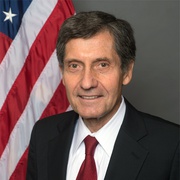
Director of National Intelligence James Clapper arrives on Capitol Hill in Washington, Thursday, Feb. 26, 2015, to testify before the Senate Armed Services Committee. J. Scott Applewhite/AP
Ten Years After ODNI, Why Intelligence Needs More People, Money and Trust
Ten years after ODNI, the intelligence community needs more money and people -- and a better public explanation of what we do.
Last week, the Intelligence and National Security Alliance, or INSA, sponsored a symposium to discuss the 10th anniversary of the 2004 Intelligence Reform and Terrorism Prevention Act that created the Office of the Director of National Intelligence, or ODNI, what was and wasn’t accomplished in that decade, and the challenges ahead.
The take away from the symposium was that today’s complex international environment requires an even more agile and effective intelligence community, or IC, staffed by the nation’s best and brightest. And although terrorism will continue to require the IC’s keen focus, more attention and resources must be devoted to cyber-related issues and the regional and country-specific challenges affecting our nation’s security.
Some of the speakers, which included the bill’s original sponsor, Sen. Susan Collins, R-Maine, and Director of National Intelligence James Clapper, talked about the ODNI’s initial establishment of two important bodies: the National Counterterrorism Center, or NCTC, to serve as the primary organization in the U.S. government for analyzing and integrating all intelligence possessed or acquired by the government pertaining to terrorism and counterterrorism; and the National Counterproliferation Center, or NCPC, to prevent and halt the proliferation of weapons of mass destruction, their delivery systems and related materials and technologies; as well as the mission managers for North Korea and Iran.
What was and is surprising to me is the absence of credible information available to the public about the work of the intelligence community, its mission, its people and its successes. My six years with the ODNI, first as the mission manager for North Korea and then as the director of NCPC, exposed me to a community of creative and dedicated public servants whose only mission was to collect and analyze the best intelligence possible and when directed by the president to conduct covert operations to protect the nation.
Not surprisingly, there’s no absence of information on the IC’s failures. I lost count of the number of times I was reminded by counterparts at the State Department that the IC got it wrong with Iraq. The 2002 National Intelligence Estimate that assessed Iraq had reconstituted its nuclear weapons program was wrong and therefore why should they accept the IC’s assessment that North Korea had a clandestine uranium enrichment program. Yes, the IC erred with its estimate on Iraq, but its work on North Korea’s nuclear and missile programs and proliferation efforts has been excellent.
(Related: The US Intelligence Community Is Bigger Than Ever, But Is It Worth the Cost?)
Equally excellent has been the IC’s coverage of Iran and its nuclear and missile programs, to include the initially undeclared uranium site at Qom and its support to Hezbollah and Hamas. The IC’s take down of the A.Q. Khan proliferation network was another success, as was its coverage of Syria and the nuclear reactor they were building in Al Kibar with the aid of North Korea, and their extensive chemical weapons program and the IC’s efforts to ensure all chemical weapons were removed from Syria.
These are just a few of the many accomplishments of the IC’s coverage of countries like North Korea and Iran and its work on counterproliferation. Facilitating these successes and addressing the list of regional and country-specific intelligence challenges is the close working relationship the ODNI has established with the 16 agencies and organizations in the IC. Ensuring that these agencies work together, in an integrated mission-focused manner, while ensuring these IC agencies and organizations have the resources and support necessary to succeed has been a major ODNI accomplishment.
Equally impressive has been the IC’s work on counterterrorism, from the take down of Osama Bin Laden to the removal of the al-Qaeda leadership, the IC’s counterterrorism efforts have been impressive, although many challenges remain. Much of this success goes to the Central Intelligence Agency’s Counterterrorism Center, responsible for all overseas collection and operations, working closely with NCTC, and responsible for analyzing and integrating this intelligence.
Much of the decade’s success should be credited to the institutions created by that 2004 Intelligence Reform Act. In April 2005, Ambassador John Negroponte became the first director of national intelligence, or DNI. Since then, we’ve had four DNIs who presided over an intelligence community of 17 agencies and organizations, including ODNI. The DNI was also told to establish a National Intelligence Council comprised of senior analysts to produce national intelligence estimates, and the National Counterintelligence Executive, to perform duties provided in the Counterintelligence Enhancement Act of 2002. The DNI was also authorized to establish one or more National Intelligence Centers to address intelligence priorities, including but not limited to regional issues.
The 2004 Intelligence Reform Act and the establishment of the ODNI have given the nation a more integrated and mission focused intelligence community. The regional and functional challenges confronting the nation needs a strong and appreciated intelligence community.




